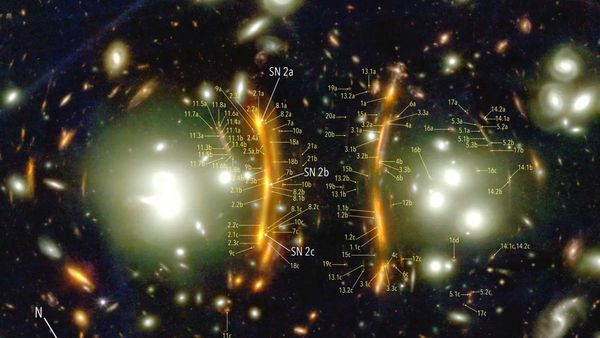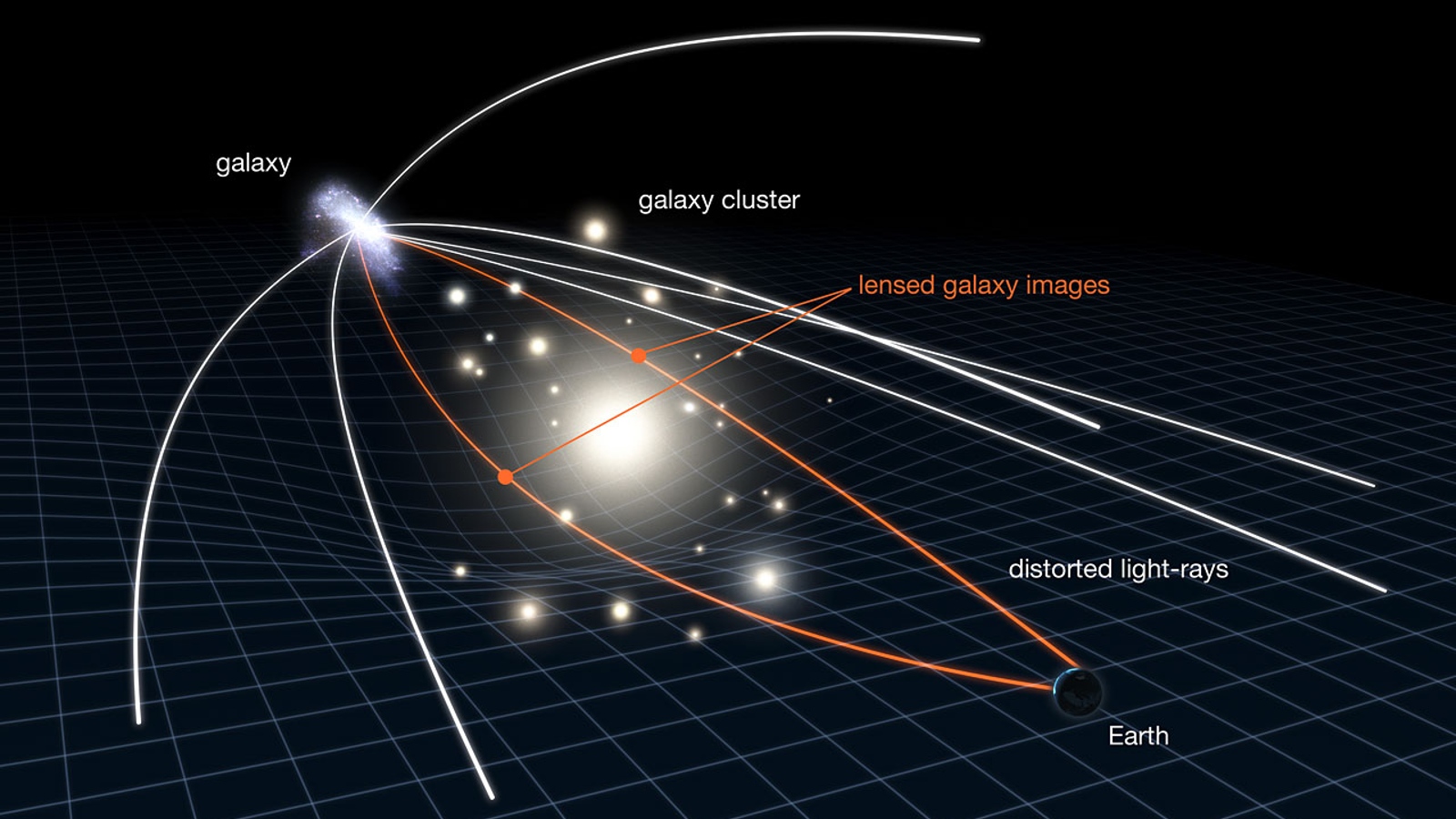Supernova in James Webb Space Telescope image could help solve one of the universe's biggest mysteries
NASA's James Webb Space Telescope has spotted a distant supernova that appears three times in the same photo.

A rare, warped supernova that appears three times in a single image could help researchers finally solve a long-standing inconsistency about the universe that has threatened to unravel our understanding of the cosmos, one expert claims.
The type 1a supernova, named SN H0pe, was first discovered lurking in photographs captured by NASA's James Webb Space Telescope (JWST) in March. In these images, the exploding star can be seen as an arc of orange light with three bright points that surround part of the galaxy cluster PLCK G165.7+67.0 (G165), which is around 4.5 billion light-years from Earth.
The light arc is the result of gravitational lensing — an effect caused when light from a distant object, such as a supernova, passes through space-time that has been warped by the gravity of a massive foreground object, like a large galaxy, that is positioned directly between the distant object and the observer. This also magnifies the distant object, making it easier for researchers to analyze.
Related: Distortions in space-time could put Einstein's theory of relativity to the ultimate test
The three bright spots in the arc around G165 make it seem like there are three separate light sources being visually manipulated, or lensed by the foreground galaxy. But in reality, the supernova, which is located around 16 billion light-years from us, has been duplicated twice by the lensing effect.
In a new article published on BigThink.com on Sept. 20, astrophysicist and science communicator Ethan Siegel, who was not involved in the study, wrote that SN H0pe could help solve a longstanding inconsistency about the expansion of the universe — the "Hubble tension."
The Hubble tension is based on a discrepancy between the two main ways of estimating the rate of the universe's expansion, known as the Hubble constant. The first method, which involves measuring expansion using the cosmic microwave background (CMB) — leftover radiation from the Big Bang that was first detected in 1964 — comes out with one value for the Hubble constant. But the second method, which involves measuring how far specific objects, such as galaxies and supernovas, are moving away from us, consistently comes out with a slightly higher value.
Breaking space news, the latest updates on rocket launches, skywatching events and more!
Related: The universe could stop expanding 'remarkably soon', study suggests
This problem has confused scientists for decades because there is no clear reason why one method should produce a different result from the other, Siegel wrote. The conundrum has even caused some researchers to declare it a crisis in cosmology.
SN H0pe could help solve the Hubble tension because it is a type 1a supernova, which astronomers refer to as a "standard candle" — an incredibly reliable reference point from which we can measure the universe's expansion, Siegel wrote.
Type 1a supernovas involve a white dwarf star stealing matter from a binary partner star, before reaching critical mass and exploding. These bright explosions all have near-equal initial luminosity and dim over time at the same rate. By comparing these standard candles at various distances from Earth, scientists can work out exactly how fast they are moving away from us and can then deduce the expansion rate of the universe.
SN H0pe is a particularly important standard candle because it is the second most distant type 1a supernova ever detected, Siegel wrote. The strong gravitational lensing and duplication in the new images also give researchers more information to work with than normal, he added.
The idea of using duplicated supernovae to tackle the problem of Hubble tension is not new. In May, scientists used data from a reappearing, quadruple-lensed supernova named Refsdal to calculate a new value for the Hubble constant. Although this still differed from the value calculated using the CMB, the difference between the two was reduced, suggesting that they could one day match up.
It is currently unclear whether SN H0pe can be used to calculate an even more reliable value for the Hubble constant. But researchers are confident that if JWST's keen eye can continue to pick out more distant standard candles, the problem of Hubble tension may finally be solved.

Harry is a U.K.-based staff writer at Live Science. He studied Marine Biology at the University of Exeter (Penryn campus) and after graduating started his own blog site "Marine Madness," which he continues to run with other ocean enthusiasts. He is also interested in evolution, climate change, robots, space exploration, environmental conservation and anything that's been fossilized. When not at work he can be found watching sci-fi films, playing old Pokemon games or running (probably slower than he'd like).



